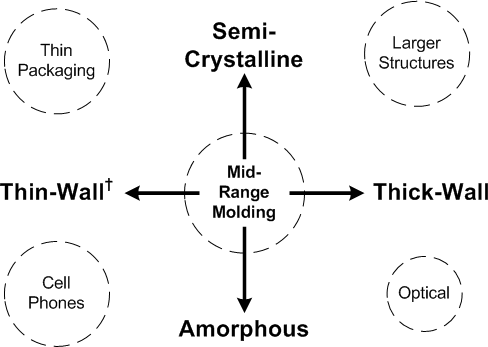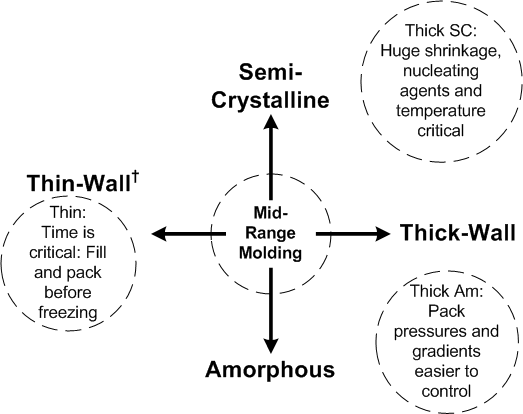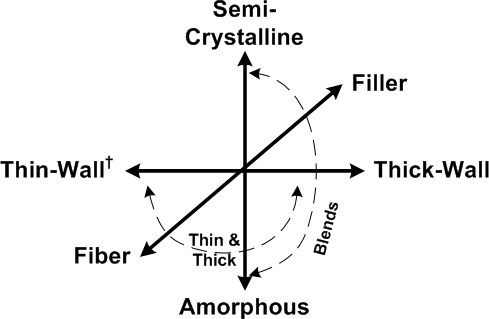Tip of the Day 177: The Molding World in Quadrants
We often risk using a kind of “one size fits all” mode of thinking about plastic processes, their control and quality monitoring. I have found the following diagram useful for separating the different regions in the world of injection molding.

(For those who need the more complicated version, footnote‡ )
Future tips will refer to this idea as we work though different strategies for quality and consistency. For example, you could use the quadrant idea to think of different applications in the injection molding industry like this:

Or you might imagine different areas of importance for control like this:

The main point is that each application should be evaluated based on its particular behavior. This basic, four quadrant model tries to cover the most significant categories.
† The term “thin-wall” can generally but thought of as an aspect ratio: flow length / wall thickness. Even thick-ish parts (2-3 mm), if quite long, can require fill times that allow freezing during fill. However, even short but very thin (½ – ¾ mm) parts can be called thin-wall because they can still freeze very fast.
‡ If you like to complicate things you could add a “Z” axis for fillers: maybe fiber in one direction and filler in the other. You can also imagine parts with both thin and thick wall and blends or co-polymers of semi-crystalline and amorphous materials.


